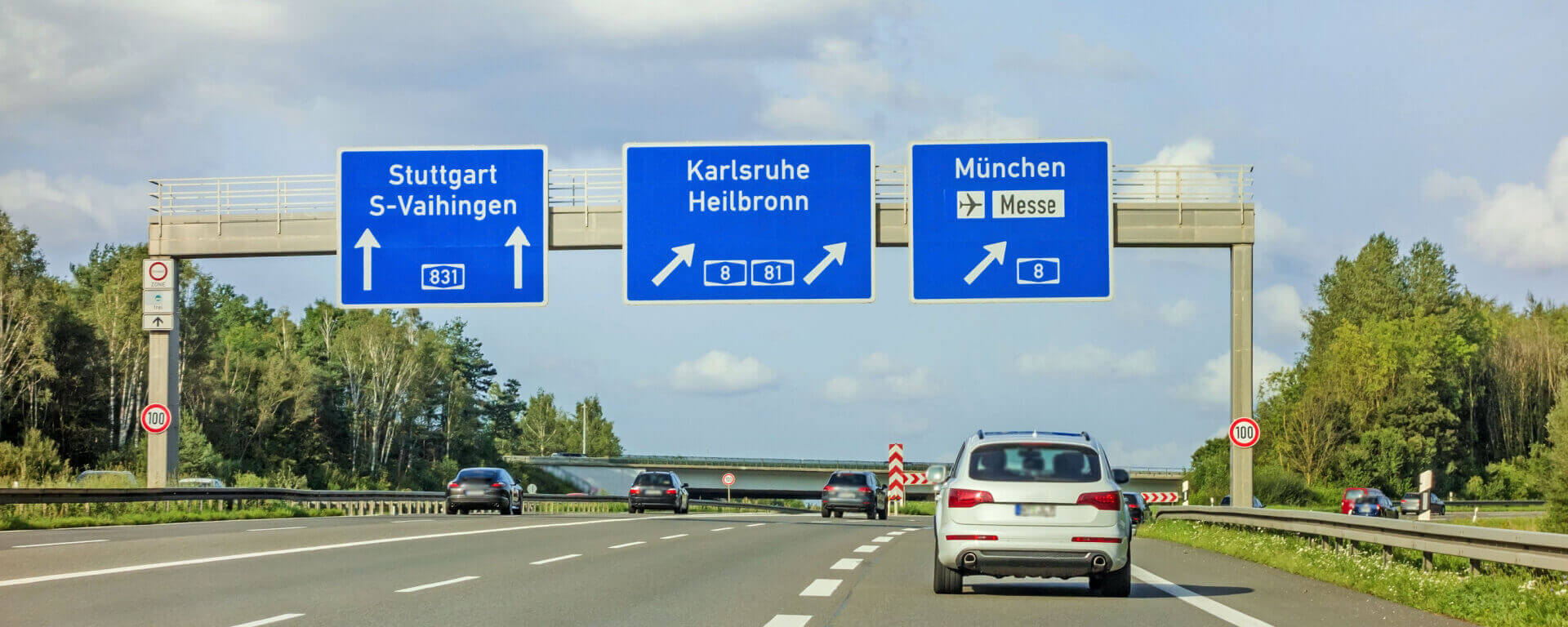Buying a car from another European country and importing it to the UK is not uncommon. The lure of cheaper prices and broader choice can be an attractive proposition.
But buying a car from another country within Europe can be a complex process and involves a large amount of documentation to comply with Customs VAT and UK Import Duty legislation.
The process can throw up a multitude of questions: which documents do I need? Where do I pay VAT? What kind of insurance is required? Can I drive my car home from Europe? Do I need transit plates?
There are a series of vital steps to follow to ensure your imported car is fully legal. For example, the vehicle must be registered for use on UK roads, and you must have the right import car insurance.
If you are considering buying and importing a car from Europe, here are some important guidelines to follow:
Can I Buy a Car in Europe as a UK Resident?
It is possible to buy a car in Europe as a foreigner or UK resident, but legally owning one in that country is not. This is because it is almost impossible to register a car in your name in any European country without an address or place of residency there.
Some specialist import businesses get around this by offering buy back schemes, while you can also set up a company in France or Bulgaria that will also allow you to do this. However, these ‘loopholes’ are rare.
Can I Buy a Car in Europe and Drive it to the UK?
Your new car will not yet be registered in the country where you live. So how do you get it home? Careful consideration must be taken, or you could end up with penalties and fines when making a long cross-border journey.
Tow it home
It is perfectly legal to tow the car home as long as the vehicle it is attached to is fully insured and legally registered.
Ship it home
You can hire the services of a specialised shipping company, freight forwarder or forwarding agent to transport your car home. These businesses are highly experienced in importing vehicles to the UK from Europe and all over the world, ensuring all documentation is complete so your vehicle arrives safely at its destination.
Drive it home
It is entirely plausible to drive your new car home yourself. However, there are a number of important steps you must take before you set off.
You must secure temporary number plates in the country where you purchased the car, and you must arrange the correct insurance for the vehicle. When you have done this, you must also make sure your insurance is valid and the plates are recognised in every country you’ll drive through on your journey home.
As temporary number plates are not harmonised in the EU, obtaining them could be difficult and having them recognised by a different EU country could also be problematic. Different EU countries have different rules around this so it is advisable to check your route and learn how these rules could affect you.
Finally, you do not require an international driving permit (IDP) to drive in the EU, Switzerland, Norway, Iceland, or Lichtenstein if you have a photocard licence issued in the UK. However, it may be necessary to obtain an IDP to drive in some EU countries and Norway if you only have a paper driving licence or a licence issued in the Isle of Man, Jersey, Guernsey or Gibraltar.
Do I Need to Inform HM Revenue and Customs When I Buy a Car in Europe?
Yes. Once the vehicle you bought in another European country has arrived in the UK permanently you have 14 days to inform HMRC. You will not be able to register the vehicle until this process is complete. If you do it beyond the 14 days, you could be fined.
How you tell HMRC depends on whether or not you’re importing to Great Britain (England, Scotland and Wales) or Northern Ireland, and also where the vehicle is imported from.
Importing a vehicle to Great Britain
Private individuals or non-VAT registered companies should make an import declaration and complete HMRC form C384. A freight forwarder or forwarding agent can do this for you. VAT-registered companies should make an import declaration using either the Customs Handling of Import and Export Freight (CHIEF) system or the Customs Declaration Service (CDS) system. Again, a freight forwarder or forwarding agent can do this for you.
Importing a vehicle to Northern Ireland from the EU
You will need to inform HMRC using the Notification of Vehicle Arrivals (NOVA) service and pay VAT on the vehicle before you can register it.
Importing a vehicle to Northern Ireland from outside the EU
Private individuals or non-VAT registered companies should make an import declaration and complete HMRC form C384. A freight forwarder or forwarding agent will do this for you. VAT-registered companies should make an import declaration using either the Customs Handling of Import and Export Freight (CHIEF) system or the Customs Declaration Service (CDS) system. Again, a freight forwarder or forwarding agent can do this for you. The next step is to tell HMRC about the imported vehicle within 14 days through the Notification of Vehicle Arrivals (NOVA) service.
What Happens Next?
Once you have told HMRC about your imported vehicle, you will receive a reply informing you if you must pay VAT and duty and how much this will cost you.
VAT is based on the total cost of the vehicle plus any accessories, delivery and extra charges and duty. Duty is charged on vehicles imported to Great Britain from outside the UK and to Northern Ireland from outside the UK or the EU.
HMRC will also tell you when your NOVA application has been processed as you cannot register your vehicle with DVLA until this has been completed. HMRC will make a NOVA application on behalf of private individuals and non-VAT registered companies.

How Do I Approve My Imported Vehicle?
You will need to prove your imported vehicle meets environmental and safety regulations in order to register it. There are exemptions for some vehicles first registered or manufactured more than 10 years ago. Discover which vehicles are exempt.
It is likely that left-hand drive cars from Europe will require some modifications for use in the UK, such as altering headlights to avoid glare for oncoming traffic, changing the speedo display to miles per hour and fitting a rear fog light when required.
What If My Imported Vehicle is Registered in the EU?
If it is, you will need a manufacturer’s Certificate of Conformity to show you have approval for an EU-registered vehicle. Left-hand drive vehicles will also need a certificate of GB conversion Individual Vehicle Approval (IVA).
If you are unsure whether your vehicle qualifies for GB conversion IVA, you should contact the Vehicle Certification Agency (VCA).
What If My Imported Vehicle is Not Registered in the EU?
To secure approval for a vehicle that’s not registered in the EU you should apply for either Individual Vehicle Approval (IVA) or Motorcycle Single Vehicle Approval (MSVA) for 2, 3 or smaller 4-wheel vehicles.
How Do I Register My Imported Vehicle?
As outlined above, you cannot register your imported vehicle until you have:
- told HMRC you have imported a vehicle and received confirmation that your NOVA application has been processed.
- paid VAT and duty if HMRC require you to do so.
- received proof of vehicle approval.
You will also need to tax your imported vehicle when your register it with the DVLA and pay a £55 fee.
When these steps have been completed, you can register your imported vehicle.
You are also required to send supporting documents for an imported vehicle and DVLA might ask to inspect the vehicle.
What extra supporting documents do I need to register my imported vehicle?
You must provide the following original documents:
- proof of vehicle approval.
- form V267, or ‘declaration of newness’ when registering a new vehicle.
- an invoice from the supplier or evidence showing the date of vehicle collection.
- the original foreign registration certificate showing the date of the vehicle’s manufacture. If you do not have this, DVLA may accept other forms of proof of the manufacture date.
What if my imported vehicle is left-hand drive?
You will require a Certificate of Mutual Recognition in addition to the documents listed above to prove your imported vehicle is suitable to be driven on UK roads.
How long can the process take?
It can typically take up to six weeks to complete the registration process for your imported vehicle and for your registration certificate (V5C) to arrive.
How do I get number plates made up for my imported vehicle?
A V5C is required for getting number plates made up. You can only do this from a registered number plate supplier who will ask for proof of your name and address and that you are allowed to use the registration number. Check if you have the right documents.
Are the rules different for temporary imported vehicles to the UK?
Yes. It’s possible to use a vehicle with foreign number plates without registering or taxing it in the UK in the following circumstances:
- you are a visitor and are not planning to live in the UK.
- the vehicle is taxed and registered in its home country.
- The vehicle will be used for no more than 6 months in total.
Is it expensive to insure an imported car from Europe?
Parallel imports are vehicles from EU countries that already meet UK safety standards. Brands like Volkswagen, Ford and Peugeot are good examples and won’t cost much more to insure than their equivalent model in the UK.
However, car specifications can differ between countries which may increase your insurance premiums. A general rule to follow is that the more straightforward and mainstream the car, the cheaper the insurance is likely to be.
If you’re looking to buy a car from Europe and bring it back to the UK, don’t let the cost of insurance put you off as there is variety of affordable insurance options available.
Let Keith Michaels Arrange Your Import Car Insurance
Need a quote for an imported vehicle? Looking for expat car insurance? Keith Michaels specialises in providing insurance for all models and types of imported vehicles from Europe and around the globe. Contact us now.



